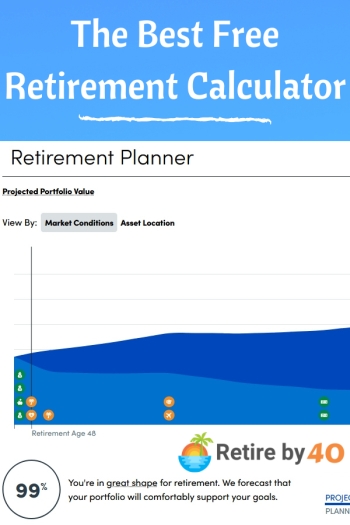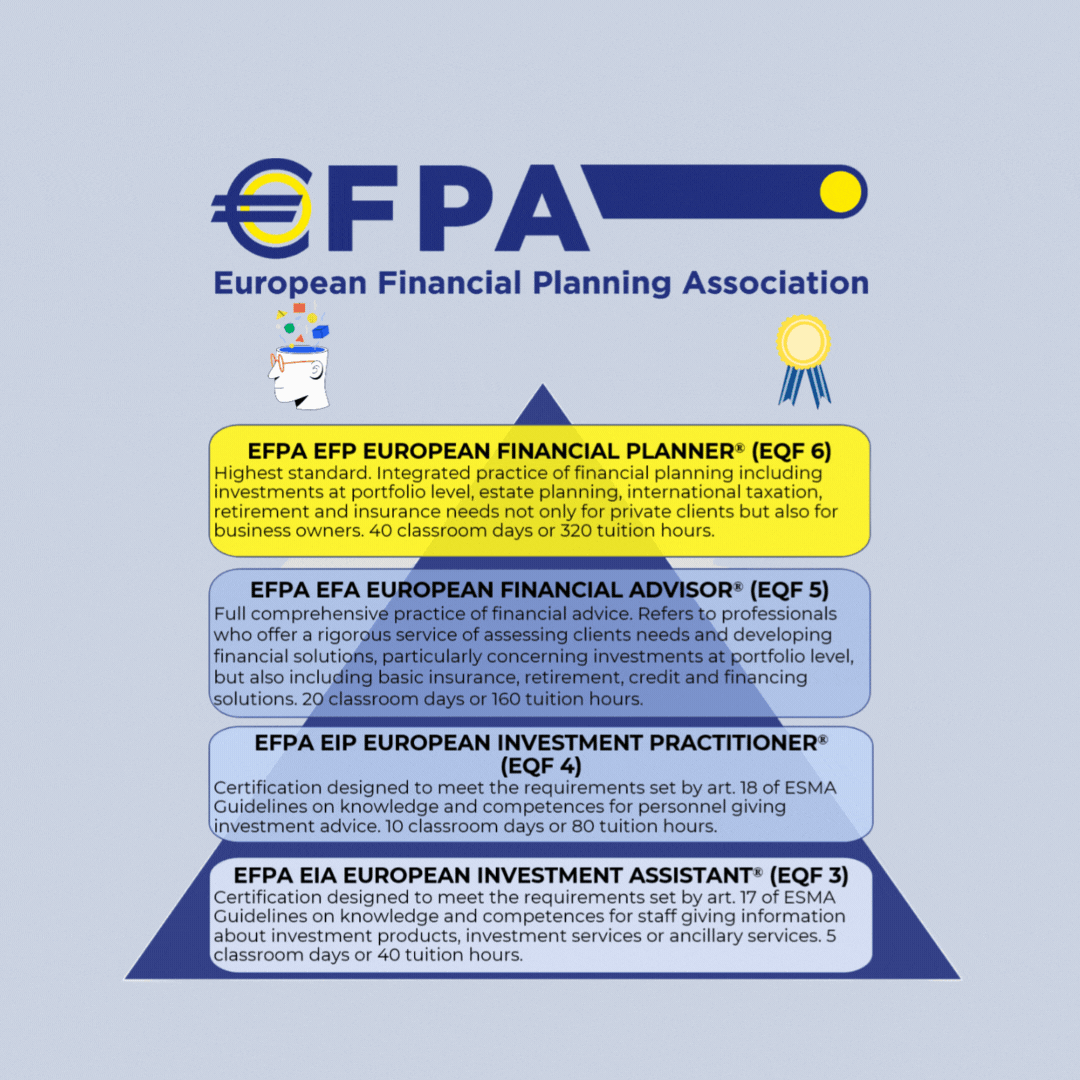
Fidelity has a variety of retirement income products that can be used by individuals or businesses. Employers can offer an immediate income annuity through the company's Guaranteed In Income Direct program. The plan comes with institutional pricing and the ability to choose from a variety of insurance companies. Additionally, it offers digital tools and support to make the transition easy. Individuals have the option to convert any amount or type retirement plan savings into a guaranteed income retirement. Individuals don't need to convert their entire retirement savings. They can keep any amounts in the workplace savings account.
What are the components of a retirement-income plan?
A retirement income plan is a key element of retirement planning. It will help determine how much money to retire comfortably and when to start Social Security. It also helps you determine how much of your savings and investments should be invested. In the end, your retirement income plan will allow you to balance your risk tolerance against your financial goals. Your plan should be reviewed on a regular schedule to ensure it meets your income needs.
Your retirement income plan must provide you with guaranteed income, growth opportunities, and flexibility. To help you create an ideal retirement income plan, you should consider combining multiple sources of income and working with a financial advisor to help you make the right decisions. It is important to understand that retirement income plans are contractual obligations. They are subject to the insurance company's claims-paying abilities. These contracts do not carry any cash surrender value.
In retirement, creating a diverse income stream
A diversified income stream can provide many benefits in retirement. A diversified income stream can help you cover your essential expenses. This diversified approach can combine guaranteed income for fixed expenses with income from investment accounts for discretionary spending. This strategy reduces market risks and allows you to be flexible in the event of your death.

Inflation protection provides another benefit. Inflation reduces the purchasing ability of money and can impact your retirement income. Consider investing in investments that include an inflation protection function to protect yourself. Your financial needs, time frame, and tolerance for risk should all be considered when selecting a portfolio. You should also consider any possible changes in your financial circumstances and life expectancy. Medical advancements, for instance, can improve people's lives and extend their life expectancy.
Maximizing your growth potential and managing your risk
Diversifying your investment portfolio will help reduce your risk and increase your potential growth. Exercising your assets can be a major risk. This is why you should not invest all of your retirement money in stocks, or in short-term investments. However, you should have a reasonable exposure to growth investments as well.
The following sample target investment mix represents different levels and potential growth. The asset mix must be tailored to your investment goals and timeframe. If you plan to retire within five years, it is a good idea to invest in low-risk short-term bonds and stocks. If you have more money to invest, you can consider taking on greater risk and investing in longer-term and mixed stocks.
A retirement income plan
It is important to create a retirement income strategy in order to retire financially secure. This helps to determine when you should take Social Security. It also allows you to plan how your investments will be allocated to maximize growth and stability. Your retirement plan should be flexible, and include multiple income sources to meet your needs. It is a good idea to consult a financial planner to help you develop an appropriate plan. An income plan should be balanced between your financial goals, risk tolerance, and financial situation. Regular monitoring of your plan is essential to ensure your investments meet your income needs.
Inflation could reduce your purchasing power over the long-term. So it's important that you make sure your savings are protected against inflation. Diversified funds can help you diversify your investment portfolio and reduce risk. Inflation, your time horizon, current financial status and other factors should all be considered when you are choosing investments for retirement income. The cost of health care can take a significant chunk out of your retirement earnings. When planning your retirement income, it is important to take into account taxes and Social Security.

How to create a Roth401(k).
Creating a Roth 401(k), also known as a 401(k), can be a smart way to save for retirement. A Roth IRA allows you to capture your tax savings, which may help you earn higher returns after taxes. You can easily invest in a Roth IRA. There are also many benefits such as low fees and zero commissions. A Roth IRA is the perfect choice, regardless of whether you are looking to invest directly in stocks, bonds, mutual funds, or both.
Roth 401(k)s are tax-deferred, meaning that they can be withdrawn tax-free at retirement. Both pretax and Roth contributions are possible. You can choose which to use. Pretax contributions allow for you to make more money now, and you don't have to pay tax until you withdraw it. Roth contributions are tax-free.
FAQ
Do I need a retirement plan?
No. This is not a cost-free service. We offer FREE consultations so we can show you what's possible, and then you can decide if you'd like to pursue our services.
What is risk management and investment management?
Risk management refers to the process of managing risk by evaluating possible losses and taking the appropriate steps to reduce those losses. It involves the identification, measurement, monitoring, and control of risks.
Any investment strategy must incorporate risk management. The goal of risk-management is to minimize the possibility of loss and maximize the return on investment.
The following are key elements to risk management:
-
Identifying the risk factors
-
Monitoring and measuring the risk
-
How to control the risk
-
Manage your risk
What is retirement planning?
Retirement planning is an essential part of financial planning. This helps you plan for the future and create a plan that will allow you to retire comfortably.
Retirement planning includes looking at various options such as saving money for retirement and investing in stocks or bonds. You can also use life insurance to help you plan and take advantage of tax-advantaged account.
Where to start your search for a wealth management service
Look for the following criteria when searching for a wealth-management service:
-
Proven track record
-
Locally located
-
Free consultations
-
Continued support
-
Has a clear fee structure
-
Has a good reputation
-
It's easy to reach us
-
Offers 24/7 customer care
-
Offering a variety of products
-
Low charges
-
There are no hidden fees
-
Doesn't require large upfront deposits
-
A clear plan for your finances
-
Has a transparent approach to managing your money
-
Makes it easy to ask questions
-
Have a good understanding of your current situation
-
Learn about your goals and targets
-
Is available to work with your regularly
-
Works within your budget
-
A good knowledge of the local market
-
We are willing to offer our advice and suggestions on how to improve your portfolio.
-
Is available to assist you in setting realistic expectations
How can I get started with Wealth Management
The first step in Wealth Management is to decide which type of service you would like. There are many Wealth Management services, but most people fall within one of these three categories.
-
Investment Advisory Services. These professionals will assist you in determining how much money you should invest and where. They can help you with asset allocation, portfolio building, and other investment strategies.
-
Financial Planning Services: This professional will work closely with you to develop a comprehensive financial plan. It will take into consideration your goals, objectives and personal circumstances. Based on their professional experience and expertise, they might recommend certain investments.
-
Estate Planning Services – An experienced lawyer can guide you in the best way possible to protect yourself and your loved one from potential problems that might arise after your death.
-
Ensure they are registered with FINRA (Financial Industry Regulatory Authority) before you hire a professional. You can find another person who is more comfortable working with them if they aren't.
Who should use a wealth manager?
Everybody who desires to build wealth must be aware of the risks.
People who are new to investing might not understand the concept of risk. As such, they could lose money due to poor investment choices.
The same goes for people who are already wealthy. Some may believe they have enough money that will last them a lifetime. However, this is not always the case and they can lose everything if you aren't careful.
As such, everyone needs to consider their own personal circumstances when deciding whether to use a wealth manager or not.
Statistics
- According to Indeed, the average salary for a wealth manager in the United States in 2022 was $79,395.6 (investopedia.com)
- As of 2020, it is estimated that the wealth management industry had an AUM of upwards of $112 trillion globally. (investopedia.com)
- If you are working with a private firm owned by an advisor, any advisory fees (generally around 1%) would go to the advisor. (nerdwallet.com)
- US resident who opens a new IBKR Pro individual or joint account receives a 0.25% rate reduction on margin loans. (nerdwallet.com)
External Links
How To
How to Invest Your Savings To Make More Money
You can generate capital returns by investing your savings in different investments, such as stocks, mutual funds and bonds, real estate, commodities and gold, or other assets. This is called investing. It is important to realize that investing does no guarantee a profit. But it does increase the chance of making profits. There are many ways to invest your savings. There are many options for investing your savings, including buying stocks, mutual funds, Gold, Commodities, Real Estate, Bonds, Stocks, ETFs (Exchange Traded Funds), and bonds. We will discuss these methods below.
Stock Market
Stock market investing is one of the most popular options for saving money. It allows you to purchase shares in companies that sell products and services similar to those you might otherwise buy. Additionally, stocks offer diversification and protection against financial loss. If the price of oil falls dramatically, your shares can be sold and bought shares in another company.
Mutual Fund
A mutual fund is a pool of money invested by many individuals or institutions in securities. They are professional managed pools of equity or debt securities, or hybrid securities. The mutual fund's investment objective is usually decided by its board.
Gold
The long-term value of gold has been demonstrated to be stable and it is often considered an economic safety net during times of uncertainty. It can also be used in certain countries as a currency. Due to investors looking for protection from inflation, gold prices have increased significantly in recent years. The supply/demand fundamentals of gold determine whether the price will rise or fall.
Real Estate
The land and buildings that make up real estate are called "real estate". When you buy real estate, you own the property and all rights associated with ownership. Rent out a portion your house to make additional income. You may use the home as collateral for loans. The home may be used as collateral to get loans. You must take into account the following factors when buying any type of real property: condition, age and size.
Commodity
Commodities include raw materials like grains, metals, and agricultural commodities. These items are more valuable than ever so commodity-related investments are a good idea. Investors who want capital to capitalize on this trend will need to be able to analyse charts and graphs, spot trends, and decide the best entry point for their portfolios.
Bonds
BONDS can be used to make loans to corporations or governments. A bond is a loan agreement where the principal will be repaid by one party in return for interest payments. Bond prices move up when interest rates go down and vice versa. Investors buy bonds to earn interest and then wait for the borrower repay the principal.
Stocks
STOCKS INVOLVE SHARES OF OWNERSHIP IN A CORPORATION. Shares represent a fractional portion of ownership in a business. If you own 100 shares of XYZ Corp., you are a shareholder, and you get to vote on matters affecting the company. Dividends are also paid out to shareholders when the company makes profits. Dividends refer to cash distributions made to shareholders.
ETFs
An Exchange Traded Fund is a security that tracks an indice of stocks, bonds or currencies. Unlike traditional mutual funds, ETFs trade like stocks on public exchanges. The iShares Core S&P 500 (NYSEARCA - SPY) ETF is designed to track performance of Standard & Poor’s 500 Index. This means that if you bought shares of SPY, your portfolio would automatically reflect the performance of the S&P 500.
Venture Capital
Ventures capital is private funding venture capitalists provide to help entrepreneurs start new businesses. Venture capitalists provide financing to startups with little or no revenue and a high risk of failure. Usually, they invest in early-stage companies, such as those just starting out.